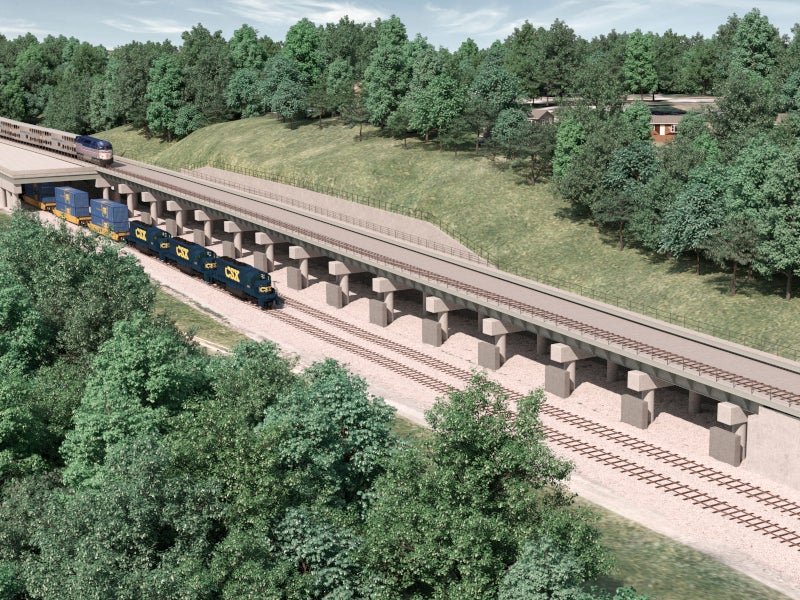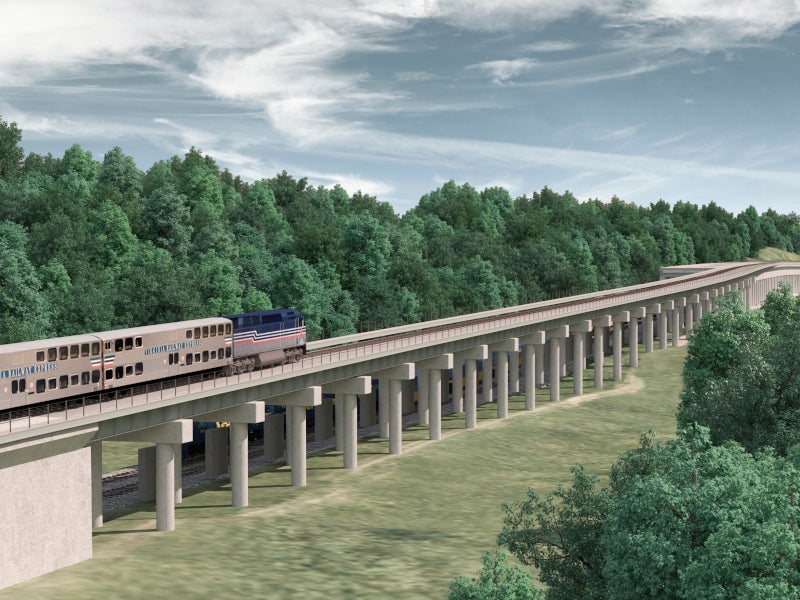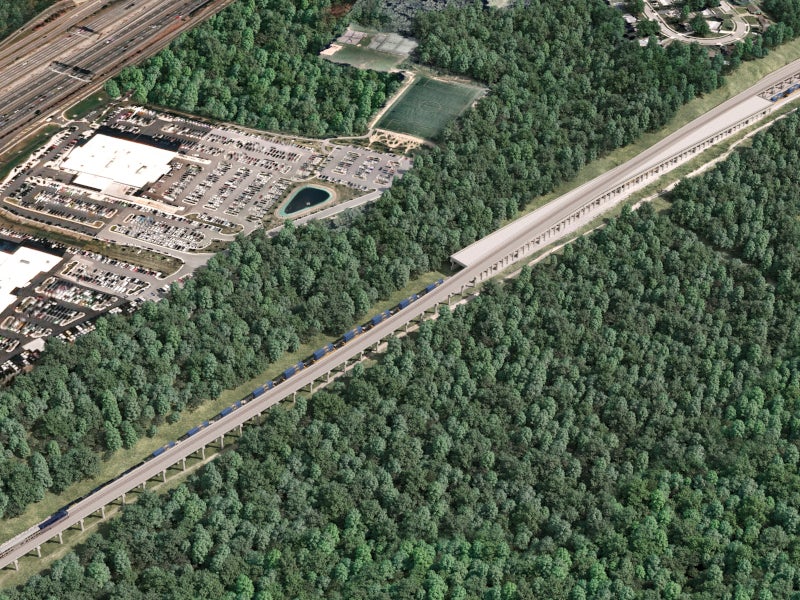The Franconia-Springfield Bypass, a rail bridge project in Virginia, US, is designed to alleviate congestion by allowing passenger trains to cross over existing freight tracks.
Virginia Passenger Rail Authority (VPRA) is leading the project in coordination with several key transportation entities, including CSX Transportation (CSXT), the National Passenger Railroad Corporation (Amtrak), Virginia Railway Express (VRE), the Northern Virginia Transportation Authority (NVTA), and the Washington Metropolitan Area Transit Authority (WMATA).
The project was granted environmental approval as part of the broader Franconia to Lorton Third Track Project in April 2021. The preliminary engineering phase commenced in May 2022.
The estimated investment in the project is $405m. The construction is expected to commence in 2024 and is expected to be completed in 2027.
Franconia-Springfield Bypass project details
The Franconia-Springfield rail bridge will be an elevated bypass structure, spanning 1.4km with a maximum height of 11.16m (36.6ft). It will be the second such structure in the US.
The structure begins and ends with elevated earth embankments, supported by retaining walls. A multi-span bridge connects the embankments. The bridge features steel beams or girders, topped with a concrete deck to support the railway track.
The bypass is designed to include one new track with the provision for a future second track. The existing tracks will be shifted to facilitate the new construction.
By enabling passenger trains to cross between the east and west sides of the tracks without interference from other trains, the bypass will improve the reliability and safety of railroad operations.
The project is in line with VPRA’s objective to create two separate rail corridors for freight trains and passenger trains that serve both VRE and Amtrak services. VRE is expected to benefit significantly from reduced train interference, which is a common cause of delays.
Financing details of the Franconia-Springfield Bypass
The Franconia-Springfield Bypass project is funded through a combination of federal, state and local contributions. VPRA, Amtrak and NVTA are also providing funds for the project. NVTA is contributing $23m to the project.
In September 2023, the project received a significant boost with a $100m Consolidated Rail Infrastructure and Safety Improvements (CRISI) grant received from the US Federal Railroad Administration (FRA) to advance the final design and construction.
Contractors involved
Flatiron/Herzog joint venture was appointed in December 2023 as the construction partners for the project, which will be delivered using the construction manager/general contractor (CMGC) method.
Herzog is a rail and heavy / highway contractor while Flatiron Construction is a civil infrastructure contractor and a subsidiary of Hochtief.
Endesco, an engineering design, consulting, and construction management company, and Caliber Consulting Group, a quality and construction management consulting company, are the subcontractors involved in the project.
Project benefits
The Franconia-Springfield Bypass will eliminate a bottleneck in one of Virginia’s most congested points, enhancing service for both passenger and freight trains.
It is a strategic component of VPRA’s mission to create separate rail corridors for passenger and freight trains, serving both Amtrak and VRE trains.
The project is also expected to reduce congestion along the I-95/I-395/US 1 corridor, making passenger rail travel more competitive by adding capacity and improving service reliability.
The bypass project is a part of the larger Transforming Rail in Virginia (TRV) initiative, which aims to enhance rail transport and reduce reliance on congested highways. The TRV initiative aims to significantly boost passenger and commuter rail services while eventually segregating freight and passenger rail operations.
Furthermore, the project seeks to improve connectivity between currently operating multimodal facilities, boost capacity to handle more passenger and freight rail services, as well as strengthen the dependability of rail services.











